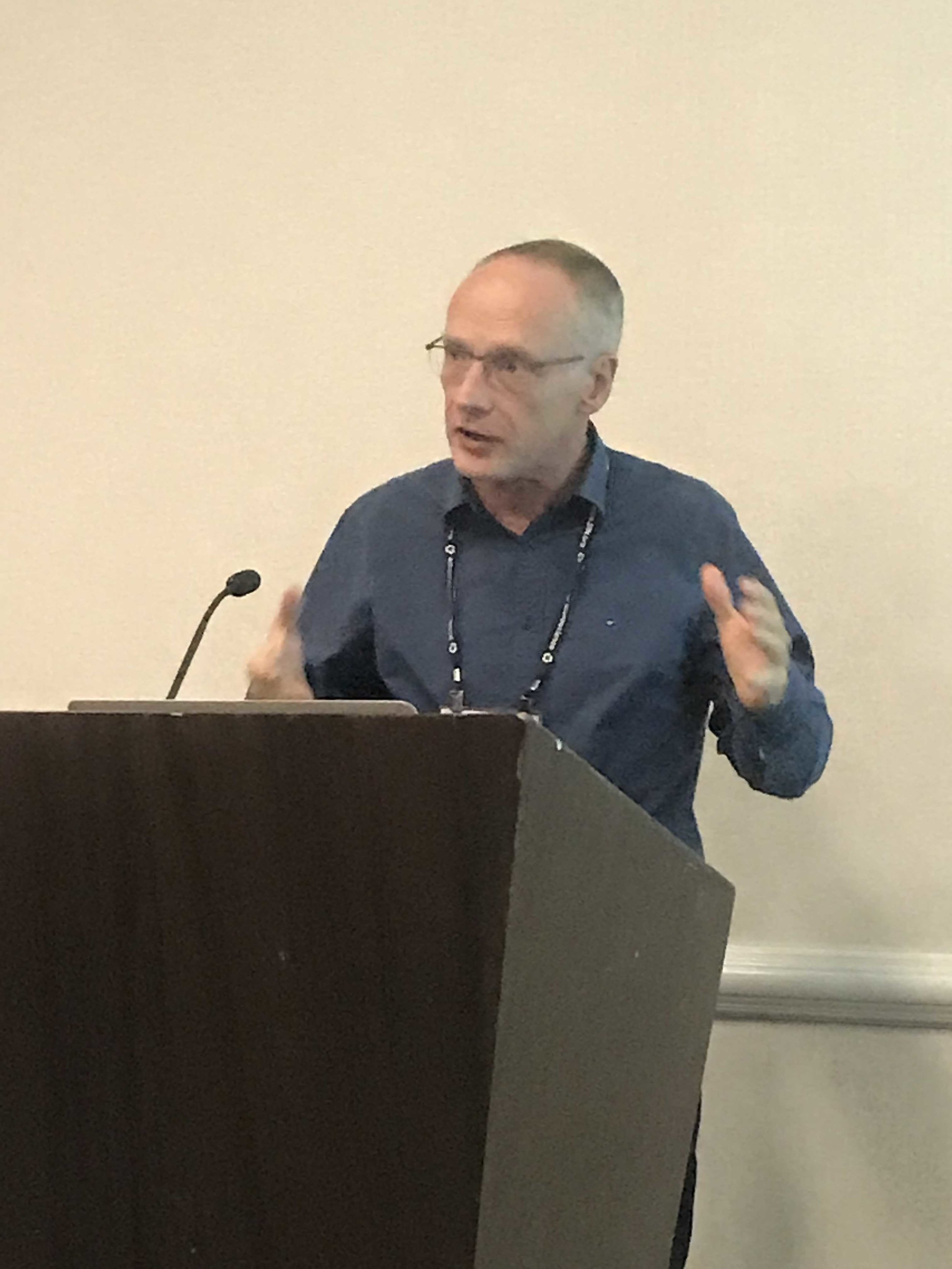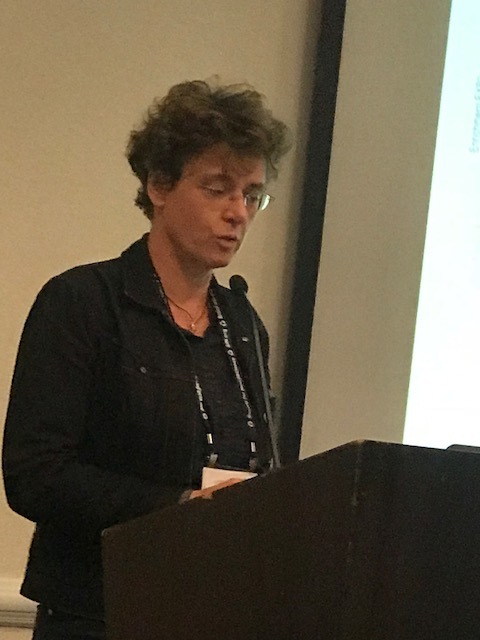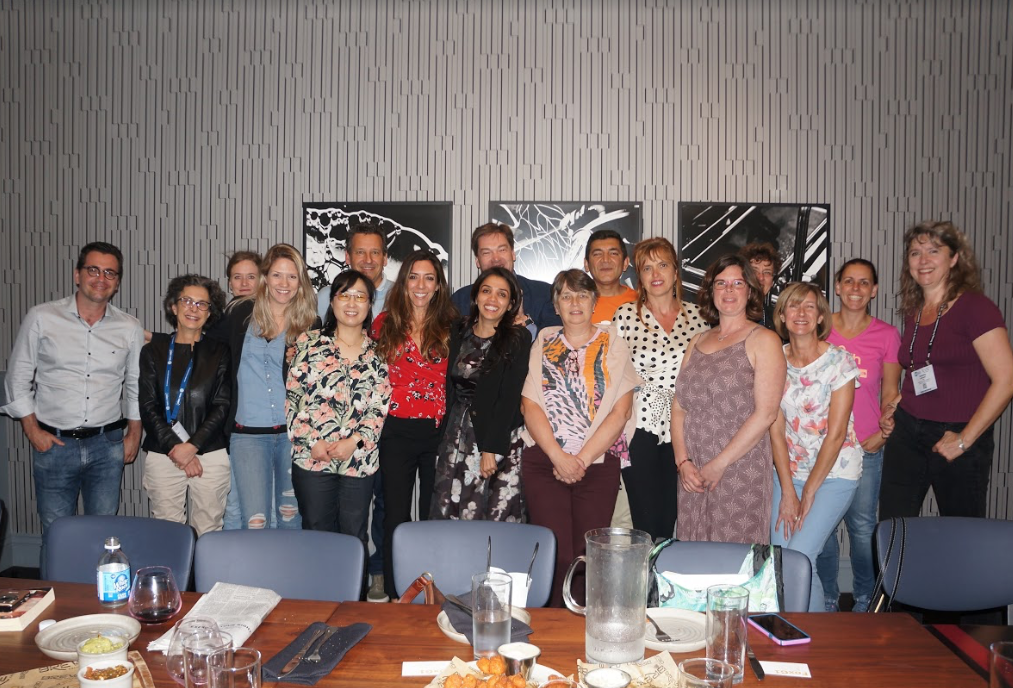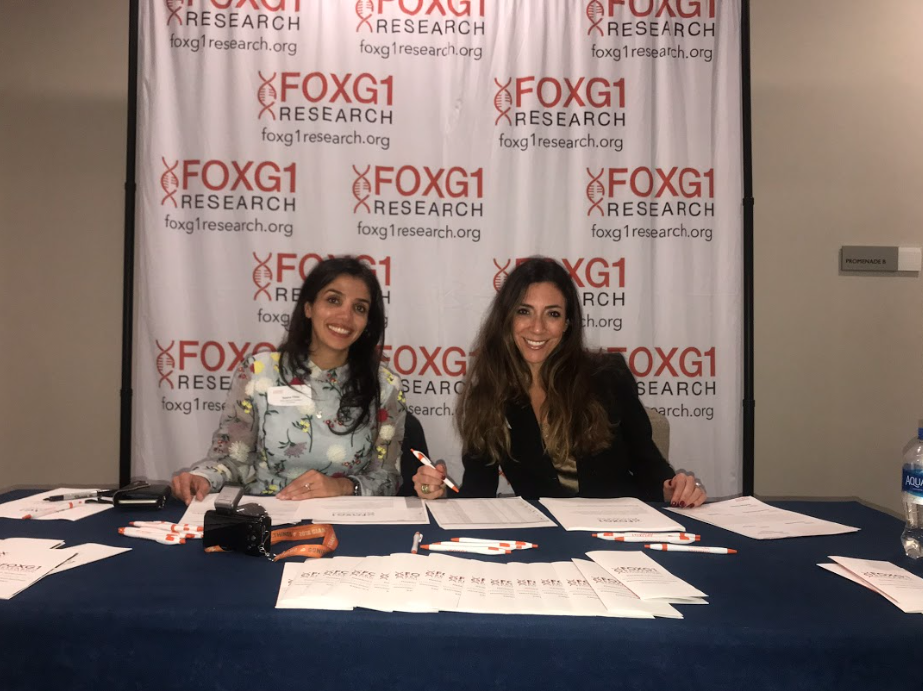The first FOXG1 symposium was a tremendous success in bringing together scientists from around the world who are interested in research around FOXG1 to collaborate with one another to find a cure. Scientists from Japan, Australia, Italy, the UK, the US, and more, presented and held deep-diving sessions to discuss what we know and what we need to know to drive research for FOXG1 syndrome.
We strategically chose to register this symposium with the Society of Neuroscience Conference, which attracts 30,000 delegates from around the world in San Diego, California. SfN and San Diego proved to be the perfect choice for this fortuitous event!
One of the most exciting things we learned is that FOXG1 is expressed also after birth and well into adult lives. This means that finding a therapy has potential to stop or improve certain symptoms.
We opened the symposium with a video from some FOXG1 kids and their parents saying thank you to the scientists for dedicating their work to finding answers about FOXG1.
The symposium kicked off with Dr. John Mason from University of Edinburgh and co-author of Building Brains - giving a short history of FOXG1, and it’s previous name - Brain Factor 1. He discussed the current mechanistic understanding of FOXG1 gene action and ideas around biomarkers that could be identified for FOXG1 syndrome.
John Mason PhD Univ. of Edinburgh
Dr Soo-Kyung Lee shared her work that two copies of the FOXG1 gene within the brain’s neurons are critical for the proper development and mapping of the brain in utero. She also showed that missing one copy of FOXG1 in neurons made the corpus callosum thinner and shorter than that of a typical brain. These findings were recently published in Neuron. This cover is a fantastic representation of her work.
Dr. Lee is in a very unique position being a lead scientist for FOXG1 Research and also being a mom of a child (daughter Yuna) with FOXG1 syndrome.
Dr. Soo Kyung-Lee OHSU
Dr. Lee is experimenting on various available FOXG1 mouse models to answer questions around which symptoms can be relieved if the FOXG1 gene mutation is fixed at various time points. She spoke about early results of FOXG1’s role in cell death. Dr. Lee additionally discussed a collaboration to use AAV9 gene therapy to normalize the FOXG1 gene dosage with scientists Dr. Guangping Gao and Dr. Dominic Gessler.
Dr. Guangping Gao and Dr. Dominc Gessler
Dr. Dominic Gessler - Univ. of Massachusettes
Dr. Gessler spoke to the audience on the work they have done to cure Canavan Disease. We were so inspired to learn that by using AAV9-mediated gene therapy, they found that all mouse symptoms were reversed. One family asked Dr. Gao to admit their child into a single-child clinical trial using FDA’s Compassionate Care Use Case guidelines at the University of Massachusetts. In 2017 the trial started. After about 2 weeks they started seeing symptoms begin to reverse! The success of this early trial enabled their work to be licensed by BridgeBio Pharma.
Turning our attention to industry, Michael Pettigrew, Director of Asset Acquisition from BridgeBio Pharma spoke to attendees on the data needed before a biotechnology company makes an investment to take a disease therapy forward into clinical trials. Understanding downstream effects, strong genotype-phenotype correlation, basic biology of the disease, time periods when disease can be cured is all necessary information.
Dr. Antonello Mallamaci - PhD SISSA Italy
These questions Michael Pettigrew discussed, that are critical for biotech investment, were discussed at length by Dr. Antonello Mallamaci, who runs The Laboratory of Cerebral Cortex Development in SISSA, Italy.
For example, Dr Mallamaci’s experiments show that various FOXG1 missense mutations are showing a gain-of-function response. This means these mutations could require different therapies than those showing a loss-of-function like gene deletion, nonsense or various truncation mutations. Dr. Mallamaci shared data on his learnings around the role of FOXG1 in diverse cellular contexts in forebrain development, including astrocytes, and inhibitory and excitatory neurons.
Similarly, Dr. Flora Vaccarino from Yale Medical School discussed how her work, looking at brain organoids, is showing that overproduction of inhibitory neurons is caused by FOXG1 over-expression.
FOXG1 may directly or indirectly regulate its own levels through a negative feedback mechanism. Dr. Vaccarino is also researching if FOXG1 syndrome differs in females versus males and what downstream genes are affected by the FOXG1 gene.
Dr. Flora Vaccarino - MD Yale School fo Medicine
Dr. Fabien Delerue who came from Australia spoke about his work to introduce FOXG1 mutations in mouse models. Dr. Tanja Vogel from Germany spoke about a novel mechanism of FOXG1 action involving RNA-binding proteins.
Dr. Alessandra Renieri from University of Siena in Italy discussed early experiments around using CRISPR to fix FOXG1 mutations in patient derived stem cells.
Dr Fabien Delerue -PhD Macquaire Univ.
De Tanja Vogel - PhD Univ. of Frieberg
Dr. Alessandra Renieri - MD, PhD Univ. Sienna, Italy
Dr. Corrine Houart - PhD King’s College London
We also learned that FOXG1 syndrome can be modeled in Zebrafish. Dr. Corrine Huoart from King’s College London shared her work on the previously unknown relationship between ASPM and FOXG1 genes.
She found that FOXG1 is downregulated when ASPM is affected. FOXG1 requires ASPM - they form a complex together. She shared ideas around modeling FOXG1 syndrome in Zebrafish and to use Zebrafish as a high throughput platform to screen small molecule drugs and learn about FOXG1 at a cellular level.
Dr. Goichi Miyoshi - PhD Tokyo Women’s Medical Univ.
We heard from Dr. Goichi Miyoshi who came from Japan on FOXG1’s role in Autism.
Various mouse experiments showed that FOXG1 deletion in specific neurons in mice tended to make these mice avoid social interactions. His experiments will help create a behavioral guide that other scientists can use when phenotyping FOXG1 syndrome in animal models.
Dr. Roberta Cilio - MD, PhD Univ. of Louvain
Dr. Roberta Cilio joined us all the way from University of Louvain in Brussels and spoke about the importance of identifying clinical endpoints that really measure a patient's improvement in symptoms. Dr. Cilio stressed the importance of this information long before even designing a clinical trial and pushed scientists to think about clinical endpoints when devising experiments in animals.
The first FOXG1 Symposium brought together an array of basic scientists, gene therapists, and clinicians focused on FOXG1 syndrome.
.
Zach Horn, Rockefeller University Hourinaz Behesti , PhD
Developmental Neurobiologist, Rockefeller University, Nasha Fitter, Co-Founder FOXG1 Research Foundation, Alyson Mourti UCSD Associate Professor of Cellular & Molecular Medicine,
The symposium also brought together parents of FOXG1 affected children from all over the world. Over the course of three days in San Diego, we were able to share our experiences and build a plan to work together to raise awareness, help more parents, and fundraise for projects along our Path to a Cure.
FOXG1 Research Worldwide Team and Scientists
We held a special Parents and Scientists meeting / Q&A
The most special guest visit came from these amazing local San Diego FOXG1 sisters and parents!
Emma & Ali Wells!
And while the symposium was the main event, our team held back-to-back deep diving sessions with scientists for three days.
UCSD
This was just the first FOXG1 symposium for scientists to collaborate. We are looking forward to the progress we will see when we meet again next, and to the new scientists who will join us next time. The phrase we kept talking about is “beyond measure” - as it goes with research, the work we are doing will benefit the blueprint of human life beyond measure.
Everything we learn, every layer we peel away, will help us get closer and closer to the core of our goal - to cure every child today and in the future who is born with FOXG1 syndrome, and potentially help many other disorders. The potential is simply beyond measure.
FOXG1 Research Foundation Co-founders Nasha Fitter and Nicole Johnson






























